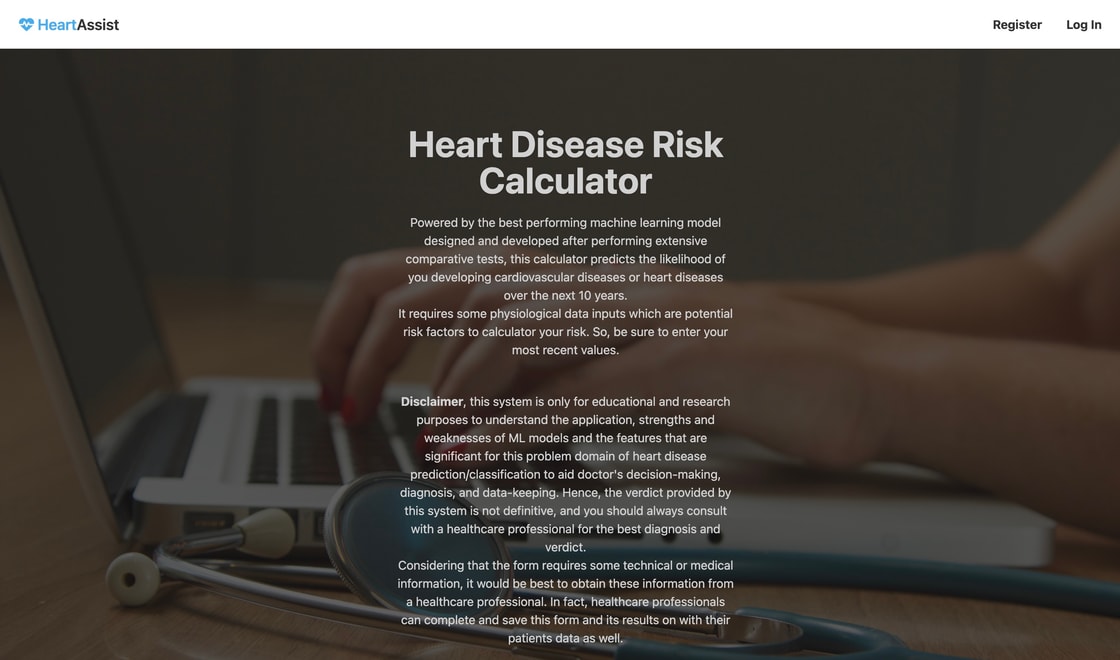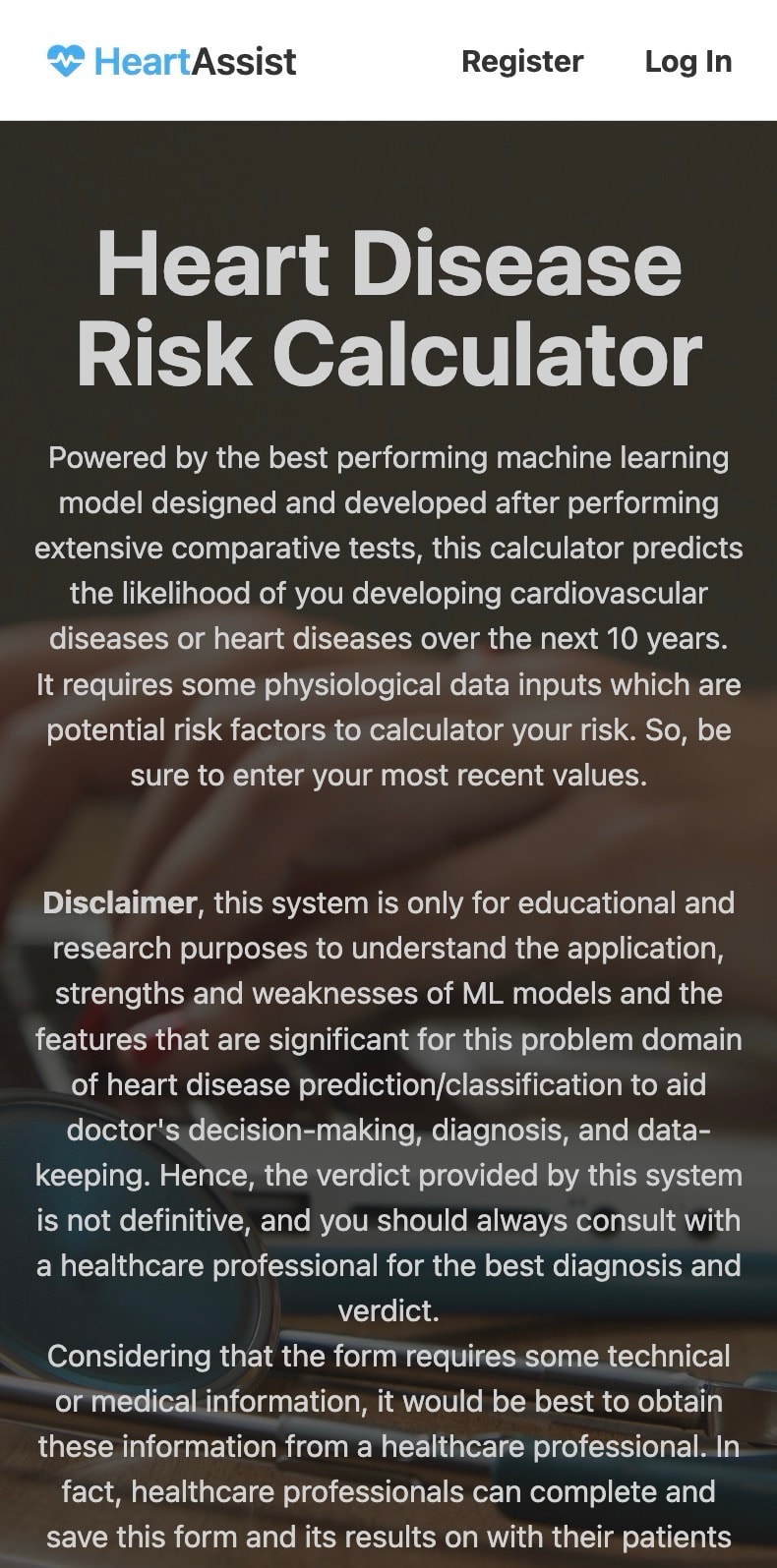HeartAssist

- Published on
- Technology
- Scikit-Learn, Keras, Django, Python, MongoDB, TailwindCSS, AWS, Docker, Nginx, Gunicorn, Jenkins, Cloudflare, Adobe XD



+2
1.0 Introduction
HeartAssist is a two-part project combining the power of data science and web application development to address the critical challenge of heart disease prediction and classification. The project integrates advanced machine learning (ML) techniques to analyze and predict cardiovascular diseases effectively.
View Complete Report View the Source Code on GitHub
2.0 Abstract
The paper presents a comparative study of various machine learning (ML) techniques and classifiers for predicting, classifying, and detecting heart or cardiovascular diseases. The study culminates in the development of a prediction algorithm capable of classifying and forecasting the occurrence and severity of such diseases based on patient input data.
The prediction algorithm is deployed in a web application format, created using the Django web framework and hosted on the AWS cloud, to provide an accessible interface for end-users to input their risk factor values and receive accurate predictions.
3.0 Introduction to the Paper
The paper begins by conducting an extensive review of existing systems and literature in the domain of machine learning and heart disease screening/classification. This review highlights the current state of ML-based heart disease prediction and classification systems, including their limitations.
The paper then outlines the parameters and methodologies chosen for the study, including the ML algorithms, dataset preparation techniques, feature selection, data split ratios, hyperparameter tuning methods, evaluation metrics, and model selection criteria.
4.0 ML Model Development
The first aspect of the project involved a comprehensive comparative study of various ML techniques. These techniques were meticulously analyzed for their effectiveness in predicting, classifying, and detecting heart or cardiovascular disease. Based on this study, a specific prediction algorithm was designed to classify and forecast the occurrence and severity of heart disease in patients, utilizing their input data.
5.0 Results of ML Model Development
The study involves the implementation of various ML models to create a predictive algorithm. Model comparisons reveal that the StackingClassifier model, combined with the Random Forest model, achieves the best performance, with an accuracy score of 86.9%, minimal error rates (0.311 mean square error), and acceptable testing times (0.0522s). This model is selected for web application deployment.
6.0 Web App Implementation
The second key aspect was the development of a user-friendly web application. Following the ML model implementation, the paper describes the development and integration of a web application, accessible via heartassist.net (No longer accessible, you may access the GitHub repository).
This application, crafted using the Django web framework and deployed on AWS, serves as an interactive platform.
The web application allows users to input their physiological information, potential risk factors, and receive predictions regarding their risk of developing heart or cardiovascular disease. The application includes features such as form saving, submission, user login and registration, and user models for rendering different pages based on account type (patient or doctor). Additionally, it enables users to connect with doctors and fellow patients on the platform.
7.0 Conclusion
The project comprises two main components: the construction of the ML model and the development of the web application for an ML-based heart disease prediction and classification system. The project's source code is available on GitHub (https://github.com/saurabhkovoor/heartassist), with execution instructions provided in the README.md file.
Keywords: Heart Disease, Cardiovascular Disease (CVD), Coronary Artery Disease (CAD), Artificial Intelligence, Machine Learning, Classification, Feature Selection.